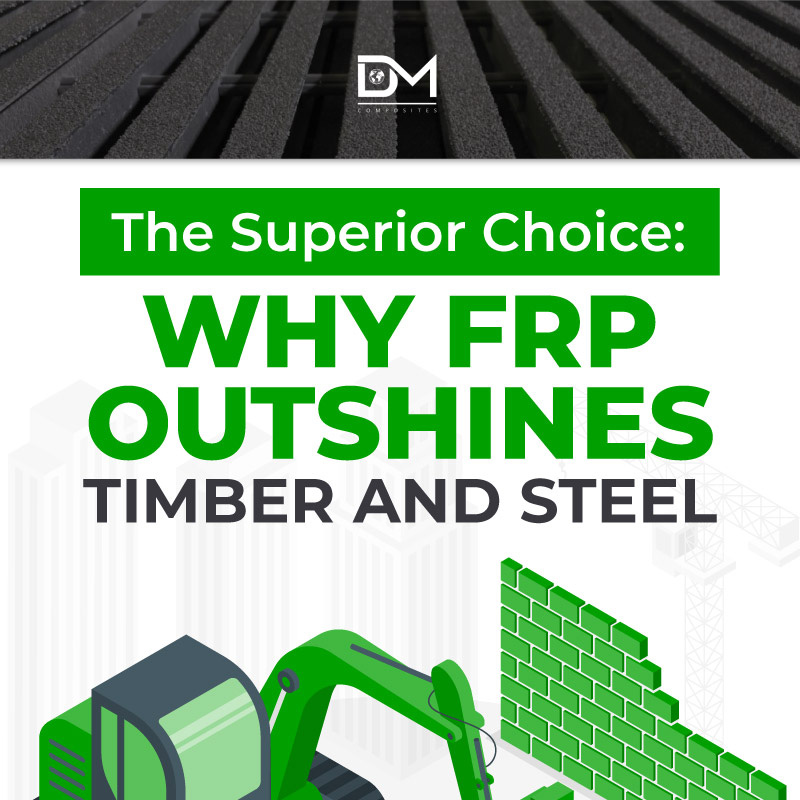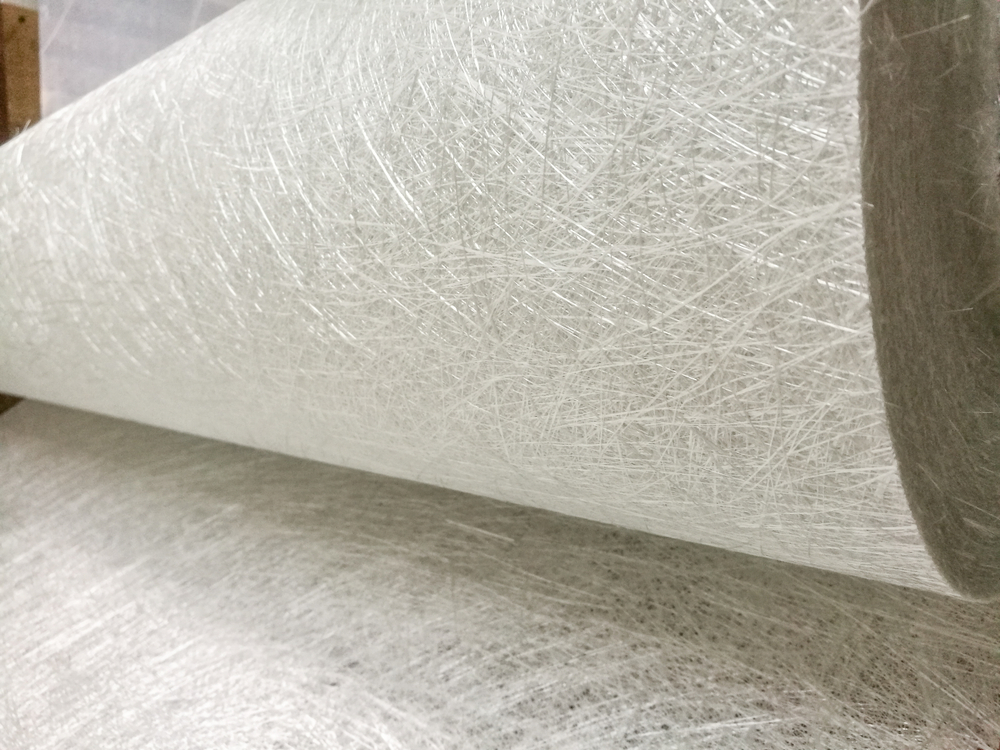FRP (fibre-reinforced polymer) products have become a top choice for many Australian construction applications in recent years. They are crafted by combining a polymer matrix with reinforcing fibres, such as glass or carbon, resulting in a lightweight yet exceptionally strong material. FRP is also renowned for its versatility, allowing engineers to create complex designs that can’t be achieved with traditional materials.
Adopting FRP for various developments across Australia effectively addresses the limitations of other common construction materials, like steel, concrete, timber, and aluminium. FRP can withstand the country’s harsh weather and environmental conditions, making it ideal for applications where infrastructure is constantly exposed to corrosive elements.
With sustainability becoming a more prominent priority in the construction sector, FRP emerges as a long-term solution to reduce waste and resource consumption, making it a popular choice for various projects in 2025 and beyond.

Key Drivers for FRP Adoption in Australia
FRP did not emerge a couple of years ago; it has been used for certain purposes since the last century. However, other construction materials remained the most popular when it came to constructing different infrastructure.
However, the unique conditions of Australia present various opportunities for FRP to shine over other materials.
- Harsh Environmental Conditions
The whole country is subject to challenging conditions that stress various public and industrial infrastructure. For instance, buildings in coastal regions are exposed to saltwater and high humidity, which can accelerate the corrosion and degradation of steel or concrete structures. In addition, high levels of UV radiation and extreme weather events can result in various faults in infrastructure.
FRP composites’ exceptional resistance to corrosive elements makes them ideal for such environments. They do not deteriorate under prolonged exposure to these elements, making them highly advantageous for coastal constructions and industrial facilities.
- Increased Focus on Sustainability
There is a growing focus on sustainability in various industries, highlighted by the Net Zero by 2050 initiative, which aims to decrease greenhouse gas emissions in the coming decades. Adopting FRP aligns with this goal because of their significantly reduced environmental impact from production to installation. Its lightweight nature also minimises transportation-related emissions, while its extended lifespan also reduces resource consumption and waste generation.
- Demand for Cost-Efficient Solutions
The upfront cost for FRP materials can be higher than that of traditional materials. However, the long-term benefits easily outweigh the initial investment, as FRP offers significantly lower ongoing costs. The inherent durability and low maintenance requirements result in substantial cost savings in the long run, allowing it to maintain its structural integrity without the need to spend on replacements or repairs.
What Makes FRP a Game-Changing Material for Australian Projects
- Strength-to-Weight Ratio
Transporting and installing structures made from traditional materials is challenging in many aspects. For instance, the logistics side requires frequent trips, while an extensive amount of materials is needed to achieve optimal structural integrity.
FRP is renowned for its remarkable strength-to-weight ratio, offering comparable or superior strength to steel and concrete without weighing as much. This attribute reduces the structural load on foundations and simplifies transportation and installation, minimising labour requirements and associated expenses.
- Corrosion Resistance
Prolonged exposure to certain elements can cause traditional materials to corrode at lightning speed. Moisture and water exposure also reduce the quality of steel, concrete, and timber, posing risks to those who use a structure.
FRP is basically immune to corrosion, making it ideal for a wide range of applications where exposure to corrosive elements is expected, such as coastal or industrial locations. It does not require a protective coating to prevent rust or flaws, providing a long-lasting solution for harsh environments.
- Longevity and Durability
Extreme weather conditions regularly occur, requiring the use of robust construction materials in certain applications, especially those used by the public. While traditional materials offer some levels of durability, exposure to elements can cause premature wear and minor and serious faults in the infrastructure.
FRP is highly resistant to wear and tear, providing an extended lifespan to various structures. Its high tensile strength allows it to perform reliably under different stress conditions, minimising the need for repairs and lifecycle costs.
- Design Flexibility
Pushing the boundaries of design has always been challenging for architects and designers, as traditional materials offer limited customisation. But FRP products are different. They can be produced based on specific structural or aesthetic requirements. This allows developers to facilitate innovative architectural solutions that might be impossible to achieve with traditional materials.
Why 2025 is a Pivotal Year for FRP Adoption
As the global construction industry accelerates its transition to sustainable and innovative materials in the coming years, FRP adoption will be a no-brainer for many applications. It helps speed up construction speed, which is crucial in the continuous urbanisation programs around the land down under.
There are also large- and small-scale projects across Australia that will heavily contribute to the adoption of FRP. For instance, the numerous railway projects from Sydney, Melbourne, and Perth can benefit from having platforms, walkways, and railings built using FRP. Using composite in these applications ensures optimal safety for thousands of people who will use the platform every day.
International trends in FRP adoption can also further shape the composites market in Australia next year. As several other countries embrace FRP for critical infrastructure projects, Australian contractors might slowly incorporate this practice into their projects.
Conclusion
The adoption of FRP composites is poised to be a defining trend for projects in 2025 and beyond. It addresses the shortcomings of traditional materials, streamlining the logistics and installation side of the operations. It also aligns with the long-term environmental and cost-effectiveness goals of many developers, providing the perfect balance of sustainability and performance for various applications.
If you are interested in adopting FRP for your upcoming projects and are looking for the best Australian supplier, DM Composites is for you. We have been the standout choice for many Australian public and private organisations, consistently delivering quality and sustainable solutions to our partners.
Visit www.dmcomposites.com.au/contact-us if you have inquiries about our products and services.
Read More:
The Superior Choice: Why FRP Outshines Timber and Steel
The Superior Choice Part 2: Why FRP Outshines Aluminum and Concrete
Understanding the Role of FRP’s Fire Resistance Qualities in Industrial Safety Measures


